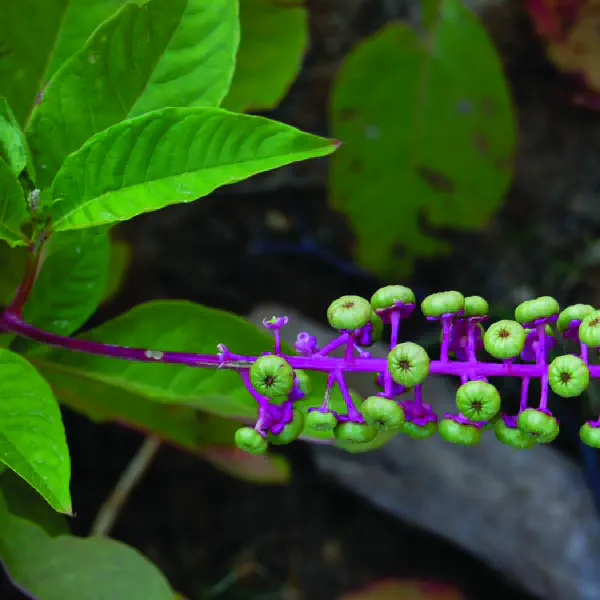Phytolacca americana
Table of Contents

Scientific Classification
| Kingdom: Plantae |
| Phylum: Tracheophyta |
| Class: Magnoliopsida |
| Order: Caryophyllales |
| Family: Phytolaccaceae |
| Genus: Phytolacca |
| Species: Phytolacca americana |
Conservation Status
Identifying Features
Pokeweeds have large, rounded leaves growing on red or purplish stalks. The flowers grow in tiny clusters of green-white petal-like sepals, followed by berries that are green to purple-black clusters hanging on the stalks of the plant.
Habitat & Range
Pokeweeds can be found along wood edges and on the sides of trail paths, towering at around 8-10 feet tall. They are native to eastern North America, the Midwest, the South, and scattered around parts in the far West.
Behavior
As a “weed”, the plant can self-seed and spread easily throughout an area. Interestingly, birds are unaffected by the poison produced in the berries and help spread the seeds to isolated areas.
All parts of the pokeweed are poisonous to humans and other mammalians, particularly in the roots and the stem. The plant grows in toxicity as it matures.
Life Cycle
Pokeweeds emerge in the spring and bloom during July-September. The berries turn purple-black as the plant matures. During the winter, above-ground growth (i.e., stems and leaves) die off but the plant will resprout again in the spring from its underground taproot.
Featured image by James Dake.

